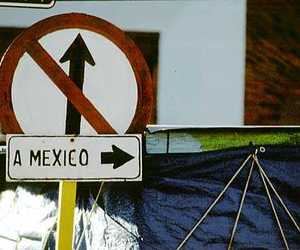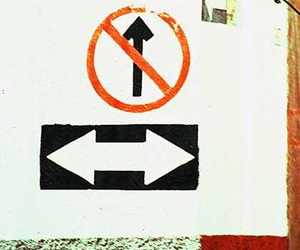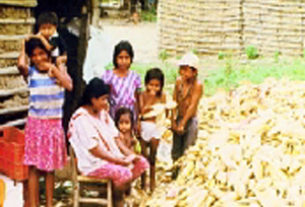 MexConnect has had many excellent articles on the subject of driving in Mexico. This article is my “two cents worth!”
MexConnect has had many excellent articles on the subject of driving in Mexico. This article is my “two cents worth!”
I’ve lived in Tehuixtla, Morelos for almost five years, where Tina and I built a country home and run an excursion business. I am retired from the U.S. Army and have my FM3 work visa.
Tina and I have driven most of Mexico from where we live (30 miles south of Cuernavaca) north to most of the towns along the U.S./Mexico border.
Mexico is an amazing country, rich in physical beauty, traditions, food, and wonderful people. In order to better enjoy all this, to be safe and to keep your sanity, I offer you the following information and tips from my point of view and experiences. Please feel free to correct or comment on anything I’ve written (my email address is at the end of this article).
Driving Permit/Insurance
- I’m not sure how it is with the six-month tourist permit and your vehicle’s legal status in Mexico. For that, check our Mexconnect Forums or go to the SAT website (Servicio de Administración Tributaria)
- Roll Brook’s website is a wonderful resource.
- The people at SAT can further inform you about the legality your U.S. or Canadian vehicle if you have an FM 2 or have acquired Mexican citizenship. Today they told me that I cannot keep my U.S. vehicle if I acquire the FM 2 visa, which you can obtain after five years with the FM 3.
- For insurance, there are a number of agencies based in the U,S. who offer coverage in Mexico. Don’t even think of driving without it, and also make sure you have a “legal coverage” clause. This provides a lawyer and posts bond for you if you are involved n an accident. It is absolutely necessary.
General Driving Tips (in no particular order!)
- Expect the unexpected, e.g., drive very defensively!
- Speed bumps are everywhere…be very watchful, as you’ll see them and not see them! Some are at the bottom of hills, and there may be three to five speed bumps within 20 yards of each other. Some are smooth and gradual, but many can bone-jarring.
- Along with speed bumps, be very much on the alert for the famous baches, or pot holes. ‘Nuff said!
- In Mexico, when traveling long distances, you mostly have two basic choices as to which roads to take: the free (libre) or the toll roads (de cuota, or autopistas). Unless you know the libre roads, I recommend taking the autopistas… they get you to your destination quicker because you don’t have to go through small towns (slowing you down and possibly getting you lost) and you have accident coverage and roadside assistance included in the toll.
- Don’t go so “native” that you don’t wear your seatbelt or belt your kids in. I ask for God’s intervention each time I see a father or mother with one-or-more kids on their laps or kids standing loose inside the car, hanging their heads out a window or riding outside in the back of the pickup. The same goes for when I see a child standing on the front part of a motor scooter hanging onto the handle bars.
- On mountainous roads, be very alert on curves, as some don’t have any form of guard rail.
- Don’t drive at night. Just don’t.
- Keep your cool on curvy, mountainous roads. People will tailgate you and pass you on curves, uphill curves, to the right, etc. I always pull over and let the idiot(s) pass me in these situations. You may get stuck behind very slow, heavy trucks that won’t pull over… again, just keep your cool.
- Drivers use their left blinker for two reasons: To signal you that it is “safe” (according to the driver in front of you) to pass him, and to signal everyone that the same driver is going to pass the vehicle in front. Make sure you know what’s going on, and don’t trust the driver in front of you to choose when you can pass him.
- Related to the above, never pass on the right because, if there is a shoulder, it is often used by people on foot or bicycle or can have some other kind of obstacle.
- Be very watchful, especially in rock slide areas, for fallen rocks of all sizes. Don’t (as signs often ask you) remove loose rocks from the road (this should be the work of the highway dept and is very dangerous).

Directional signs on a Mexican street © Bill Begalke, 2000 - Keep an eye constantly peeled for a place to pull over in an emergency (like all good pilots do from the air). Autopistas, carreteras (one step down from an autopista) and regular roads in general usually have little or no shoulders; none-the-less, always have a plan.
- Always have a cell phone with you and pray that it has coverage in case you have an emergency… there are very few emergency phones on any highway. When on toll roads, in an emergency, you can call the Green Angels (telephone: 078), the emergency road service that has patrolled toll roads since 1960.
- If you need water for your car, there are periodic water wells, especially in mountainous areas, but know that the wells are usually on one side of the highway only. If you must stop for water and the well is on the other side of the highway, be very careful as you cross. It’s better to carry your own emergency water.
- Rest stops and clean bathrooms are very infrequent on highways and, when there are any, they are usually located just after you pay your toll. This is why many vehicles pull over on lonely and dangerous highway stretches so the driver or passengers can answer Mother Nature. Therefore, take turns driving and carry toilet paper and hand sanitizer, as the autopistas may or may not have bathrooms, sometimes with no soap or toilet paper. Often someone sits at the entrance to charge you three pesos to use the bathrooms. I never pay them, as I had just paid a toll a few minutes earlier.
- Related, on autopistas and other main roads away from cities and towns, you might encounter long stretches before you see gas (Pemex) stations. Always keep your tank as full as possible.
- If you are motioned over to be inspected, it’s usually by a military platoon. They are just doing their job in support of the efforts against narco-trafficking. I show them my retired Army ID and this helps. Be pleasant and cooperative… you’ll be done a lot sooner.
- I have rarely seen a Federal police officer patrol the highways or regular police patrol in towns (maybe this is why there are so many speed bumps?), but be careful, anyway. I occasionally see them pull people over on the highway and in towns.
- If stopped, cooperate and try to settle the matter at that moment without offering or giving in to a bribe request from the policeman. I’ve been stopped four times, I’m sure because I have California plates. Each time, I was able to get off with a warning because (I guess) I speak fluent Spanish, was very polite and because I played “Danny the Dunce,” pleading ignorance to my “offenses.”
- Especially in small towns, watch out for kids 10 to 15 years old driving cars and motorcycles.
- In any town or city, be very careful with buses.
- Always carry a first aid kit, blanket(s), drinking water, flash light, road emergency kit (with reflective triangles), etc.
- Be very careful with itinerant windshield washers at red lights. Most are not aggressive, but some are. Make sure to wave them off side-to-side with your hand as soon as you see them approach. Tip: Sometimes they sneak up behind you, so check your rear view and side mirrors. In Culiacán, Sinaloa, there’s an intersection that has very aggressive windshield washers, so much so that, if I know I won’t make the green arrow for my left-hand turn, I pull over to the left 50 yards away and continue when I have the green left turn arrow.
- In all cities and towns, be alert and always roll your windows up and lock your doors when you’re at a red light or in slow traffic. Leave enough space between you and the car in front of you to drive away if need be to lessen your chance of being a victim of an express kidnapping or robbery.
- Under adverse driving conditions (rain, fog, ice, etc.), be your own driver and don’t give in to pressure from vehicle behind you to exceed the speed limit or drive faster than it is safe.
- In Mexico, the pedestrian legally has the right of way but, in reality, he doesn’t. Most pedestrians will yield to drivers in the crosswalk, although it should be the other way around. Remember this when you’re a pedestrian: You really don’t have the right of way, so stay on your toes!
- I’ll end with tips on construction zones: As I said at the beginning, expect the unexpected! At times you’ll have little or no warning that there is construction ahead. At times, it is very unclear as to how to proceed, and this is worse at night. An example can be a dotted white line that is actually for two way traffic in a construction zone, with no markings to tell you this. At night, if you absolutely must drive, be very alert, as many times there are no lights or reflective cones, strips or barrels in construction zones. And, lastly, slow down… even though those in back of you are hugging your bumper or flashing their headlights. Remember the above physical hazards, and, most importantly, workers who are very much exposed and without much or any protection.
Toll Booths
- Count your change! If you don’t, you might get cheated, usually via a handful of loose change that forces you to count it under the pressure of cars piled up behind you.
- Have a variety of bills and change available as you approach the toll plaza… although the signs as you approach it say “Get your money ready,” you never know the exact toll amount until you get to the actual booth.
- Always get a toll receipt. Sometimes the toll taker “forgets” to give you one. If this happens, you might not be eligible for the traveler’s insurance that each legally paying driver and passengers have on toll roads. This has happened to us twice. When I asked the toll takers for the receipt, both times they said, “Oh, please excuse me. Here it is.”
- Be prepared to be inspected at a military check point as you leave the toll booth. I say this in case you’re in the far left lane and the soldier motions to you to enter the inspection area to the extreme right – you’ll have to make this Herculean effort to cross two or three lanes to enter in a very short amount of space.
I know I’ve written a lot and most of it sounds negative. I prefer to think that most of it sounds realistic. I don’t want anyone to be caught off guard.
¡Saludos y les deseo muchos viajes felices y seguros! Greetings and I wish you many happy and safe journeys!
Photos by Bill Begalke © Bill Begalke 2000


